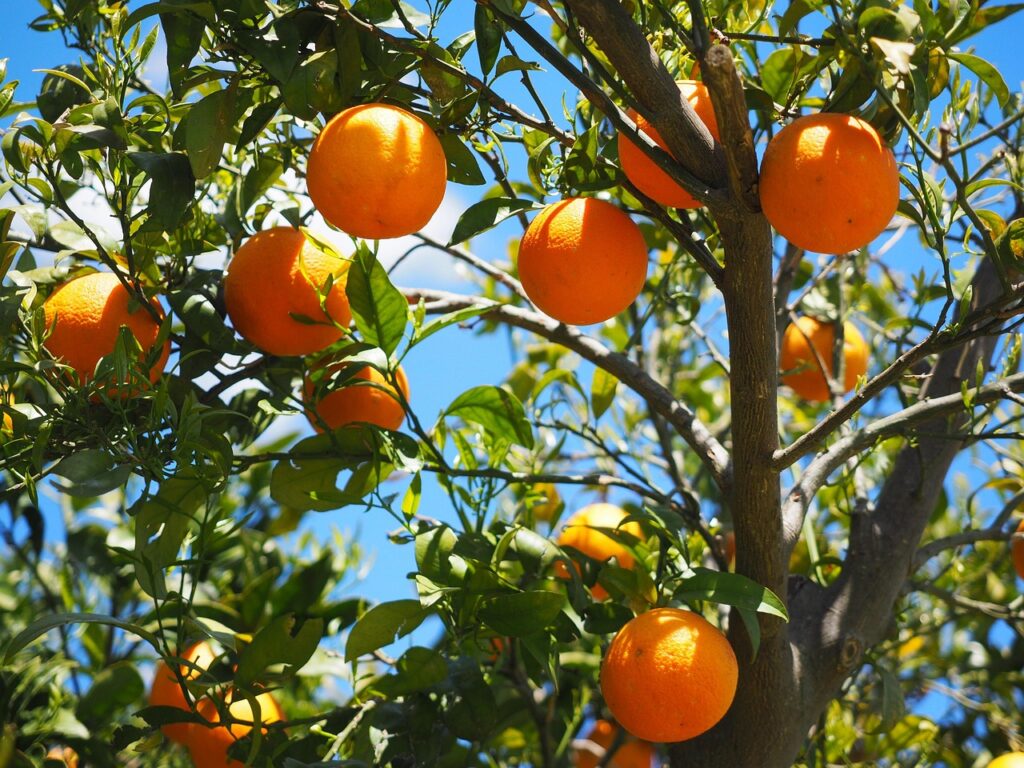1. Introduction
Washington oranges, also known as “Washington Navel Oranges,” are among the most well-known and popular oranges worldwide. Originally from Brazil, they were further cultivated in the United States and have become synonymous with high-quality citrus fruits.
2. Origin and History
The first Washington Navel oranges were brought from Brazil to California in the mid-19th century. In 1870, the U.S. Department of Agriculture received a shipment of orange tree seedlings from Bahia, Brazil. These were cultivated in Washington, D.C., and California, with the plantations in Riverside, California, achieving the greatest success. This is where the name “Washington Navel Orange” originates.
Washington oranges eventually made their way to Turkey. The first cultivation attempts began in the 1940s, particularly in the Adana region, which is known for its favorable climate and fertile soil. Today, Washington oranges are among the most widely grown orange varieties in Turkey and play a significant role in exports.
3. Botanical Characteristics
- Scientific Name: Citrus sinensis
- Fruit Shape: Round to slightly oval
- Peel: Medium to thick, easy to peel, deep orange in color
- Pulp: Juicy, seedless, intensely sweet
- Distinctive Feature: The “navel” structure at the bottom of the fruit is a characteristic trait
4. Growing Regions
Washington oranges are primarily grown in the following regions:
- USA: California, Arizona, Florida
- Spain: Valencia region
- South Africa: Western Cape, Limpopo
- Australia: New South Wales, Queensland
- Brazil: São Paulo, Bahia
- Turkey: Adana, Mersin, Antalya
5. Growing Conditions
Washington oranges thrive best under the following conditions:
- Climate: Mediterranean climate with mild winters and warm summers
- Soil: Well-drained, sandy loam soil with high nutrient content
- Irrigation: Regular watering, especially during dry periods
- Harvest Season: November to May, depending on the growing region
6. Economic Significance
Washington oranges are a major export product, particularly for the USA, Spain, and South Africa. California is the world’s largest producer of this variety. They are known for their high quality and long shelf life, making them particularly attractive for international trade. In Turkey, they are also an essential part of the agricultural sector, particularly in the regions of Adana, Mersin, and Antalya.
7. Uses and Health Benefits
Washington oranges are consumed fresh as well as processed in the food industry. They are ideal for:
- Direct consumption
- Juices and smoothies
- Jams and marmalades
- Desserts and baked goods
- Flavoring foods and beverages
Health Benefits:
- Rich in vitamin C, boosting the immune system
- Contains antioxidants, which provide cell protection
- High in fiber content, promoting digestion
- Low in calories, making them ideal for a healthy diet
8. Challenges and Future Prospects
Despite their popularity, Washington oranges face several challenges:
- Climate Change: Heatwaves and droughts can impact crop yields
- Pests and Diseases: Citrus trees are susceptible to diseases such as “Citrus Greening”
- Market Fluctuations: Competition from other citrus varieties and growing regions
Future prospects include:
- Development of more resistant varieties
- More sustainable farming methods
- Expanding the market through new product variations
9. Conclusion
Washington oranges are among the most popular orange varieties worldwide. Thanks to their unique flavor, high quality, and health benefits, they remain a vital part of the global citrus industry. Despite challenges in production and trade, promising future prospects exist through innovation and sustainable farming methods. In Turkey, they have been an integral part of agriculture since the 1940s and contribute significantly to the country’s export market.
